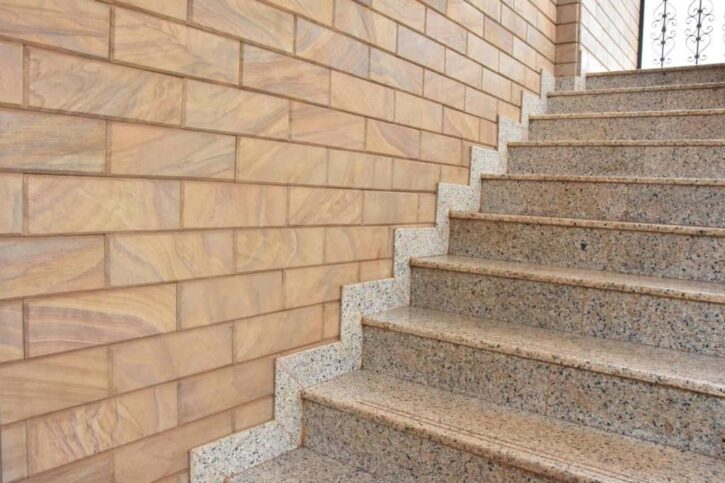
Terrazzo, a centuries-old flooring material, is making a resurgence in the world of interior design and architecture. This versatile composite material, often associated with its use in flooring, is now being embraced in various other applications. From countertops to wall finishes, terrazzo tiles are proving to be a dynamic and stylish choice for a wide range of design projects. In this exploration of terrazzo’s versatility, we will delve into its history, composition, and the myriad ways it is being used in contemporary design.
A Glimpse into Terrazzo’s Past
The roots of terrazzo can be traced back to ancient Egypt, where it was initially used for surfacing patios and courtyards. Over time, it spread throughout the Mediterranean region, with the Italians giving it the name “terrazzo,” derived from the Italian word for terrace. Terrazzo became widely popular in Venice during the 18th century, where it adorned the floors of palaces and churches.
The traditional terrazzo technique involves mixing marble chips with cement or resin, which is then polished to a smooth, gleaming finish. This classic method has remained relatively consistent over the years, but modern technology and innovative materials have expanded terrazzo’s possibilities beyond its historical use as flooring.
Unleashing Terrazzo’s Versatility
Flooring: Terrazzo’s use as flooring, particularly in the form of terrazzo floor tiles, remains its most iconic application. It adds an air of timeless elegance to both residential and commercial spaces. The variety of aggregate colors and sizes allows for endless design possibilities when crafting terrazzo floor tiles. It’s a durable choice, capable of withstanding heavy foot traffic for decades with minimal maintenance.
Countertops: Terrazzo countertops have gained popularity in modern kitchens and bathrooms. The smooth, non-porous surface is easy to clean and provides a unique focal point in any room. Terrazzo countertops can be customized to match the overall color scheme of the space.
Wall Finishes: Terrazzo is making its way up the walls, adding texture and visual interest to interiors. Whether used as a backsplash in the kitchen or a feature wall in a commercial setting, terrazzo creates a striking and durable surface. Its versatility in color and pattern ensures it can harmonize with any design aesthetic.
Furniture: Terrazzo’s adaptability extends to furniture design. Tables, chairs, and even accessories like lamps and planters can be crafted with terrazzo elements. These pieces can serve as statement items or subtle complements to the overall decor.
Staircases: Terrazzo staircases are a blend of form and function. They provide a durable, slip-resistant surface while also adding a touch of artistic flair to any space. Terrazzo stairs can be designed to match or contrast with the flooring, creating a visually captivating transition.
Exteriors: While terrazzo is predominantly an indoor material, it’s not limited to interior spaces. Some variations of terrazzo are formulated to withstand outdoor conditions, making it suitable for patio surfaces, facades, and other exterior applications.
Customization and Design Possibilities
One of the most compelling aspects of terrazzo is its customizability. Designers and architects can work closely with manufacturers to select specific aggregates, colors, and patterns that align with their vision. This level of personalization allows for the creation of unique, one-of-a-kind spaces.
For instance, in a contemporary kitchen, terrazzo countertops can be crafted to complement the colors of the cabinetry and backsplash, creating a cohesive and visually appealing design. In a retail environment, terrazzo flooring can incorporate a company’s branding colors, creating a memorable and immersive shopping experience.
The Environmental Aspect
As sustainability becomes an increasingly important consideration in design and construction, terrazzo stands out as a responsible choice. Many terrazzo manufacturers offer options that incorporate recycled aggregates, reducing waste and environmental impact. Additionally, terrazzo’s long lifespan and ease of maintenance contribute to its sustainability.
Maintenance and Longevity
Terrazzo’s durability is one of its standout features. Properly maintained terrazzo floors can last for decades, even in high-traffic areas. Routine maintenance involves regular cleaning with a pH-neutral cleaner and periodic resealing to protect the surface.
While terrazzo is durable, it’s not entirely impervious to wear and tear. Over time, it may develop small cracks or imperfections. However, these can often be repaired and the surface re-polished, restoring its original beauty.
Conclusion
Terrazzo tiles have transcended their traditional role as flooring material to become a versatile and stylish choice for a wide range of design applications. From floors to countertops, and even as wall finishes and furniture, terrazzo’s adaptability knows no bounds. Its history, composition, and sustainability make it a compelling option for those seeking both aesthetic beauty and long-term durability in their design projects. As the design world continues to evolve, terrazzo remains a timeless and versatile choice that is sure to endure for generations to come.
